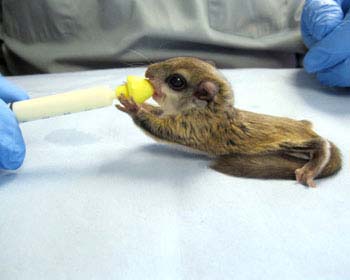Author: Brandon Goins
It’s a wild world out there, but it’s getting less so. The third Friday of May is the national observance of Endangered Species Day. On National Endangered Species Day, we acknowledge endangered wildlife and humans’ impact on their survival. There are events and programs across the state which are dedicated to protecting threatened and endangered species and educating us in ways we can help in the fight. Before we highlight ways to help, let’s discuss some of the threatened or endangered species’ that call North America home.
Some of these animals can be visited at the North Carolina Zoo. There you can learn about the ways that we can help them survive. Each visit to the zoo is a new opportunity to learn and be inspired to act by your encounter with the beauty and variety of life in North Carolina.
The N.C. Zoo website reports that the red wolf, native to the southeastern U.S., is one of the most at-risk canids in the world. Habitat destruction and hunting so reduced their numbers that they were thought to be extinct in the 1980s. As of 2013, fewer than 100 wolves were thought to be alive in the wild. Though not faring well, the red wolf population has been slowly growing thanks to conservation efforts led by the U.S. Fish and Wildlife Service. There has been good news on red wolves recently. The N.C. Zoo welcomed a litter of five red wolf pups on April 15. The following week, three more pups were born at the Durham Museum of Life and Science. The N.C. Zoo’s Breeding and Reintroduction Program has been a large part of the species’ survival on refuges like the Alligator River National Wildlife Refuge in Manteo.
Amazingly, of the seven species of sea turtles in the world, five call the North Carolina coast home. The species that can be found in North Carolina are the green, hawkbill, Kemp’s Ridley and lastly, the leatherback, which is the most common. All species of sea turtle are considered endangered or threatened, having so many species here in North Carolina brings the responsibility to help protect them.
The American black bear is another at-risk creature in North Carolina. Fortunately, their population is on the rise and their conservation status is of least concern. Black bear cubs were even recently spotted climbing the trees at Stone Mountain State Park! These bears can be spotted almost anywhere in the United States and, despite their name, can vary in color.
The American alligator has habitats in the eastern and coastal regions of North Carolina. The American alligator was hunted to near extinction because their skin was sought to make shoes and purses. Hunting and loss of habitat were key factors in their addition to the 1973 Endangered Species Act’s list of threatened species. The Endangered Species Act made it illegal to hunt them and took swift action to protect their habitat, allowing them to make a recovery. This led to their removal from the endangered species list in 1987. The Endangered Species Coalition claims that the alligator population recovered dramatically enough for hunting and egg collection to be legalized, leading to a multi-million-dollar industry.
Endangered species are not limited to animals. There are many endangered plant species, which educating ourselves about can go far to help preserve. Learning and acknowledging the issues these species face is half of the work. The N.C. Zoo’s conservation efforts work to ensure the survival of all types of threatened species, including plants. The North Carolina Department of Agriculture also has a list of protected plants and resources to educate citizens on what to do to help. 
There is so much that we can do to advance the fight for the survival of threatened species. Simple, everyday things such as recycling and monitoring daily usage of resources such as water, fuel, and energy are small steps towards making a difference. Supporting locally grown produce and growers makes a difference. These efforts simply require keeping in mind that we share this planet and that we remain mindful of how we use natural resources.
For those interested in becoming more involved, the N.C. Zoo Wildlife Rehabilitation Center needs people to assist in feeding, rehabilitating, and cleaning up after animals in the breeding and reintroduction programs. You can learn more about how you can commit your time to making a vital difference in these ongoing efforts in the NC Zoo’s conservation section.

